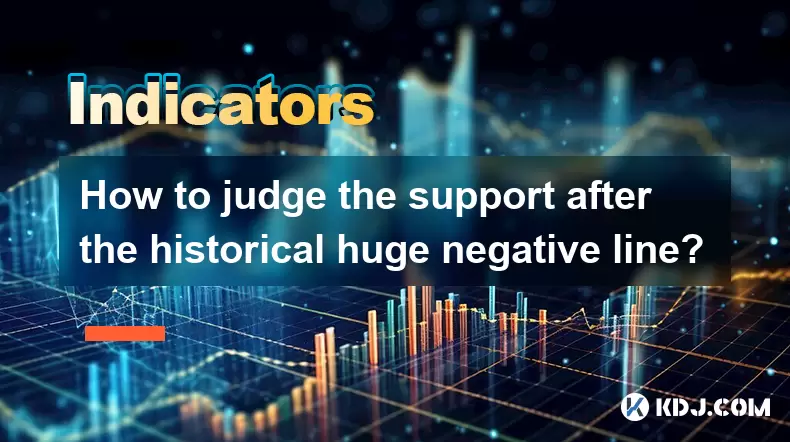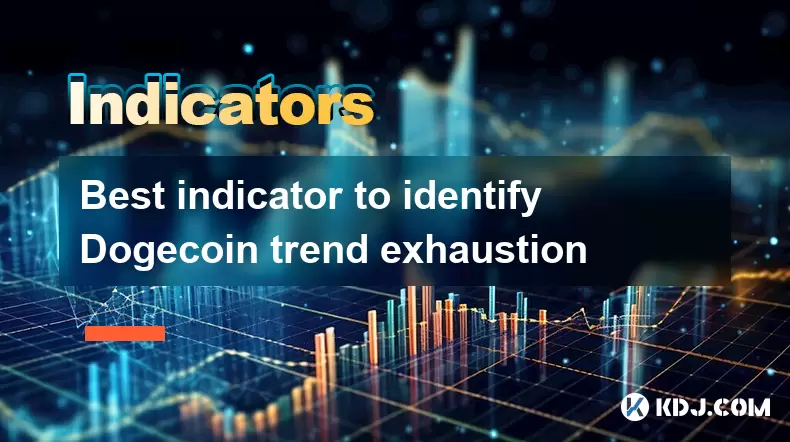-
 Bitcoin
Bitcoin $108,562.4295
0.46% -
 Ethereum
Ethereum $2,533.9553
1.52% -
 Tether USDt
Tether USDt $1.0002
-0.01% -
 XRP
XRP $2.2542
2.23% -
 BNB
BNB $662.4567
1.48% -
 Solana
Solana $151.4114
3.48% -
 USDC
USDC $0.9999
0.00% -
 TRON
TRON $0.2860
0.91% -
 Dogecoin
Dogecoin $0.1685
3.72% -
 Cardano
Cardano $0.5809
1.63% -
 Hyperliquid
Hyperliquid $39.2916
1.85% -
 Sui
Sui $2.8874
0.85% -
 Bitcoin Cash
Bitcoin Cash $496.5801
2.72% -
 Chainlink
Chainlink $13.3582
2.48% -
 UNUS SED LEO
UNUS SED LEO $9.0279
0.07% -
 Avalanche
Avalanche $18.0773
2.30% -
 Stellar
Stellar $0.2426
3.05% -
 Toncoin
Toncoin $2.9086
6.01% -
 Shiba Inu
Shiba Inu $0.0...01170
2.97% -
 Hedera
Hedera $0.1587
3.47% -
 Litecoin
Litecoin $87.4596
1.13% -
 Monero
Monero $317.0425
0.73% -
 Polkadot
Polkadot $3.3778
1.90% -
 Dai
Dai $0.9999
-0.01% -
 Ethena USDe
Ethena USDe $1.0001
-0.01% -
 Bitget Token
Bitget Token $4.4095
0.63% -
 Uniswap
Uniswap $7.3593
6.80% -
 Pepe
Pepe $0.0...09910
3.64% -
 Aave
Aave $274.7388
2.68% -
 Pi
Pi $0.4607
0.48%
How to judge the support after the historical huge negative line?
A historical huge negative candle in crypto often signals strong sell-off, and traders use Fibonacci levels, volume, and trendlines to identify key support zones for potential reversals.
Jul 01, 2025 at 03:01 am

Understanding the Historical Huge Negative Line
In the context of cryptocurrency trading, a historical huge negative line refers to a candlestick that shows a significant drop in price over a short period. This type of candlestick is often accompanied by high volume and indicates strong selling pressure. Traders frequently look at such patterns to assess potential support levels where the price may stabilize after the sharp decline.
The first step in judging support after such a candle is to analyze the context in which it occurred. Was the market in an uptrend before the drop? Or was it already in a downtrend? Identifying whether the negative line broke key support levels or simply acted as a retracement within a larger trend is crucial for accurate analysis.
Key Technical Indicators to Monitor
To judge support effectively, traders should rely on several technical indicators that help confirm potential reversal points:
- Fibonacci Retracement Levels: These levels are drawn from a prior swing high to swing low and can indicate areas where the price might find support after a large negative move.
- Moving Averages: Especially the 50-day and 200-day moving averages, which often act as dynamic support or resistance zones.
- Volume Profile: Helps identify where most trading activity occurred during the negative candle. Areas with high volume may indicate stronger support or resistance.
- Relative Strength Index (RSI): If RSI reaches oversold territory (below 30), it may suggest that the asset is undervalued and due for a bounce.
Monitoring these tools helps traders pinpoint potential support zones more accurately and avoid false signals.
Identifying Support Zones on the Chart
After identifying the presence of a historical huge negative line, the next step involves marking potential support levels on the chart. The following steps should be taken:
- Locate Previous Swing Lows: Look for areas where the price previously reversed upward. These levels may serve as support again.
- Horizontal Support Levels: Draw horizontal lines at previous consolidation zones or psychological price levels (e.g., $10,000 for Bitcoin).
- Trendline Support: Connect multiple lows to form a trendline. If the price approaches this trendline after a big drop, it could act as support.
By combining these visual tools with the earlier mentioned technical indicators, traders can formulate a clearer picture of possible support areas where buying interest may emerge.
Price Action Confirmation at Potential Support Levels
Once potential support zones have been identified, it’s essential to wait for price action confirmation before making any trading decisions. This includes:
- Bullish Candlestick Patterns: Such as hammer, bullish engulfing, or morning star formations near the support level.
- Break of the Downtrend Line: A clear break above a descending trendline suggests a shift in momentum.
- Volume Increase: A surge in volume at a support level indicates institutional or retail buying interest.
These signs help confirm that the support level is holding, rather than just being a temporary pause before further declines.
Setting Up a Trade Based on Confirmed Support
If the price shows signs of bouncing off a support level, traders can consider entering long positions. Here's how to structure such a trade:
- Entry Point: Enter the trade once a bullish candle closes above the low of the negative candle or breaks a key resistance formed post-drop.
- Stop Loss: Place a stop loss below the recent swing low or below the support zone to manage risk.
- Take Profit: Use Fibonacci extensions or prior resistance-turned-support levels to determine profit targets.
- Position Sizing: Adjust your position size based on your risk tolerance and distance to the stop loss.
This structured approach ensures that traders make informed decisions rather than relying solely on emotions or speculation.
Frequently Asked Questions
What if the price continues to fall past the identified support level?
If the price breaches a key support level with strong volume, it suggests that the bearish momentum is still in control. In such cases, traders should reassess their strategy and possibly look for new support levels or prepare for deeper corrections.
Can support levels also turn into resistance later?
Yes, especially in crypto markets where sentiment can change rapidly. Once a support level is broken, it often becomes a resistance level in future price movements.
How reliable are Fibonacci levels in volatile crypto markets?
While Fibonacci retracements work well in trending markets, they may produce false signals in highly volatile or sideways conditions. It’s best to use them alongside other tools like volume and candlestick patterns.
Is there a difference between short-term and long-term support levels?
Absolutely. Short-term support levels may only hold for a few hours or days, while long-term supports—like multi-month lows—carry more weight and are watched closely by institutional investors.
Disclaimer:info@kdj.com
The information provided is not trading advice. kdj.com does not assume any responsibility for any investments made based on the information provided in this article. Cryptocurrencies are highly volatile and it is highly recommended that you invest with caution after thorough research!
If you believe that the content used on this website infringes your copyright, please contact us immediately (info@kdj.com) and we will delete it promptly.
- Drake, Bitcoin, and Mainstream Music: A New Era?
- 2025-07-07 12:30:12
- Meme Coins, ROI Potential, 2025 Selection: What's Hot and What's Not?
- 2025-07-07 12:30:12
- Bitcoin, Ethereum, and Dogecoin: Navigating the Crypto Landscape in a Wild Week
- 2025-07-07 12:50:11
- Meme Coin Mania: Explosive Picks and Top Buys in 2025
- 2025-07-07 12:50:11
- Bitcoin, Ethereum, and the Cryptocurrency Market: Riding the Wave of Innovation
- 2025-07-07 12:55:12
- Elon Musk, Bitcoin, and Crypto News: A 2025 Perspective
- 2025-07-07 13:10:12
Related knowledge

How to trade Dogecoin based on funding rates and open interest
Jul 07,2025 at 02:49am
Understanding Funding Rates in Dogecoin TradingFunding rates are periodic payments made to either long or short traders depending on the prevailing market conditions. In perpetual futures contracts, these rates help align the price of the contract with the spot price of Dogecoin (DOGE). When funding rates are positive, it indicates that long positions p...

How to spot manipulation on the Dogecoin chart
Jul 06,2025 at 12:35pm
Understanding the Basics of Chart ManipulationChart manipulation in the cryptocurrency space, particularly with Dogecoin, refers to artificial price movements caused by coordinated trading activities rather than genuine market demand. These manipulations are often executed by large holders (commonly known as whales) or organized groups aiming to mislead...

Bitcoincoin market structure break explained
Jul 07,2025 at 02:51am
Understanding the Dogecoin Market StructureDogecoin, initially created as a meme-based cryptocurrency, has evolved into a significant player in the crypto market. Its market structure refers to how price action is organized over time, including support and resistance levels, trend lines, and patterns that help traders anticipate future movements. A mark...

What is the significance of a Dogecoin engulfing candle pattern
Jul 06,2025 at 06:36am
Understanding the Engulfing Candle Pattern in CryptocurrencyThe engulfing candle pattern is a significant technical analysis tool used by traders to identify potential trend reversals in financial markets, including cryptocurrencies like Dogecoin. This pattern typically consists of two candles: the first one is relatively small and indicates the current...

Best indicator to identify Dogecoin trend exhaustion
Jul 07,2025 at 11:29am
Understanding Dogecoin Trend ExhaustionIdentifying trend exhaustion in Dogecoin (DOGE) is crucial for traders aiming to avoid late entries or potential reversals. Trend exhaustion occurs when a prevailing price movement loses momentum, often leading to a consolidation phase or reversal. In the volatile world of cryptocurrencies like Dogecoin, understand...

Dogecoin monthly chart analysis for long term investors
Jul 06,2025 at 10:08am
Understanding the Dogecoin Monthly ChartFor long-term investors, analyzing the monthly chart of Dogecoin (DOGE) provides a macro view of its price behavior over extended periods. The monthly chart captures major trends, key resistance and support levels, and potential reversal zones that are crucial for strategic investment planning. Unlike daily or hou...

How to trade Dogecoin based on funding rates and open interest
Jul 07,2025 at 02:49am
Understanding Funding Rates in Dogecoin TradingFunding rates are periodic payments made to either long or short traders depending on the prevailing market conditions. In perpetual futures contracts, these rates help align the price of the contract with the spot price of Dogecoin (DOGE). When funding rates are positive, it indicates that long positions p...

How to spot manipulation on the Dogecoin chart
Jul 06,2025 at 12:35pm
Understanding the Basics of Chart ManipulationChart manipulation in the cryptocurrency space, particularly with Dogecoin, refers to artificial price movements caused by coordinated trading activities rather than genuine market demand. These manipulations are often executed by large holders (commonly known as whales) or organized groups aiming to mislead...

Bitcoincoin market structure break explained
Jul 07,2025 at 02:51am
Understanding the Dogecoin Market StructureDogecoin, initially created as a meme-based cryptocurrency, has evolved into a significant player in the crypto market. Its market structure refers to how price action is organized over time, including support and resistance levels, trend lines, and patterns that help traders anticipate future movements. A mark...

What is the significance of a Dogecoin engulfing candle pattern
Jul 06,2025 at 06:36am
Understanding the Engulfing Candle Pattern in CryptocurrencyThe engulfing candle pattern is a significant technical analysis tool used by traders to identify potential trend reversals in financial markets, including cryptocurrencies like Dogecoin. This pattern typically consists of two candles: the first one is relatively small and indicates the current...

Best indicator to identify Dogecoin trend exhaustion
Jul 07,2025 at 11:29am
Understanding Dogecoin Trend ExhaustionIdentifying trend exhaustion in Dogecoin (DOGE) is crucial for traders aiming to avoid late entries or potential reversals. Trend exhaustion occurs when a prevailing price movement loses momentum, often leading to a consolidation phase or reversal. In the volatile world of cryptocurrencies like Dogecoin, understand...

Dogecoin monthly chart analysis for long term investors
Jul 06,2025 at 10:08am
Understanding the Dogecoin Monthly ChartFor long-term investors, analyzing the monthly chart of Dogecoin (DOGE) provides a macro view of its price behavior over extended periods. The monthly chart captures major trends, key resistance and support levels, and potential reversal zones that are crucial for strategic investment planning. Unlike daily or hou...
See all articles

























































































